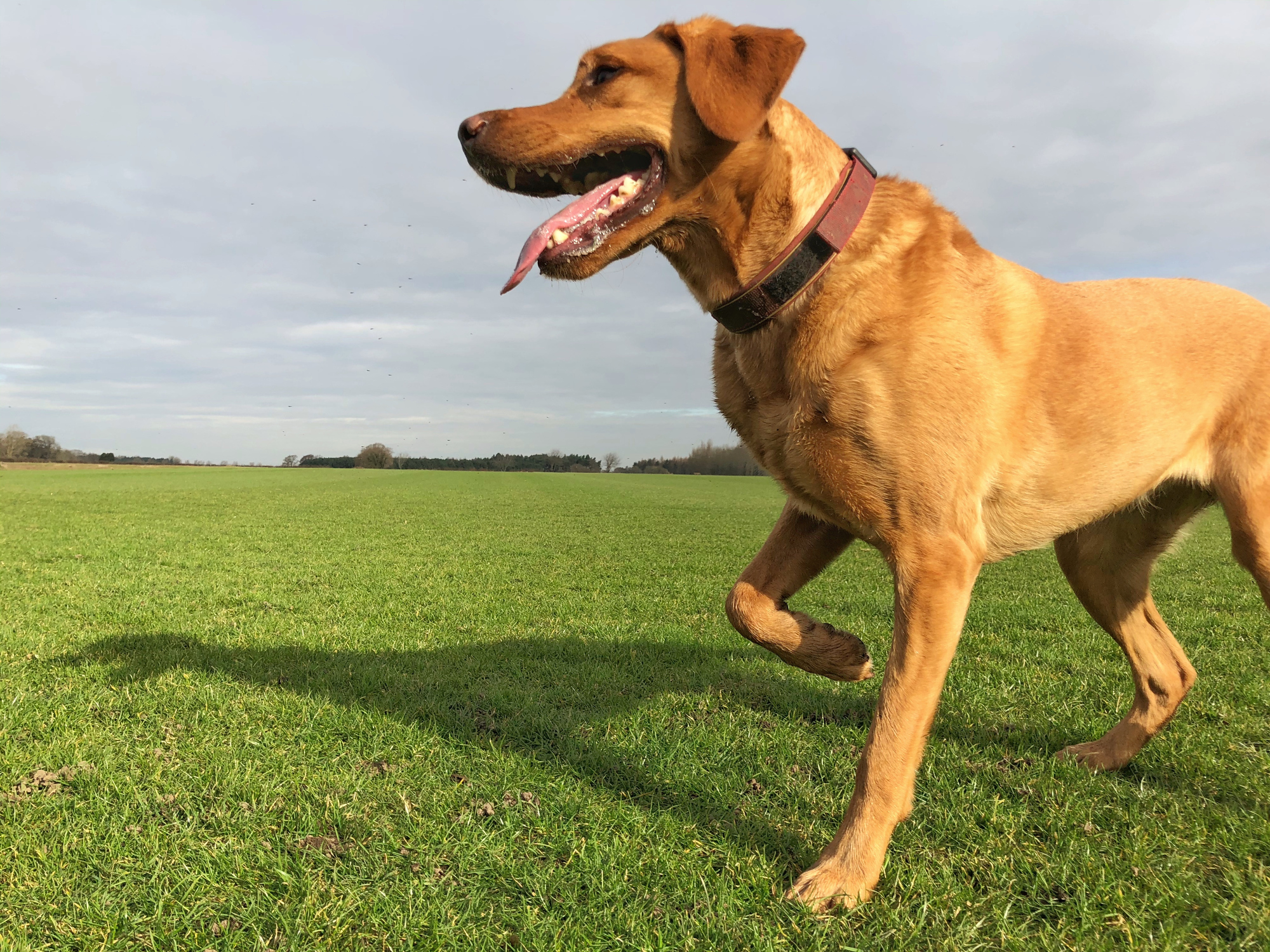10 Common Causes of Limping In Pets
Doctor of Veterinary Medicine

While efforts are made to answer all questions as quickly as possible, if an immediate answer is required or if your pet is in need of urgent or emergency care, contact your pet's veterinarian immediately.
Doctor of Veterinary Medicine

You will receive an answer from Dr. Lindsay and our vet/tech team as soon as possible, usually the same day.
All answers are provided for informational or educational purposes only, and are intended to be a supplement to, and not a substitute for, the expertise and professional judgment of your pet's veterinarian.
It may be necessary to consult your pet's veterinarian regarding the applicability of any opinions or recommendations with respect to your pet's symptoms or medical condition.
CloseDoctor of Veterinary Medicine

An error has occurred, please reload the page and try again.
CloseWhile efforts are made to answer all questions as quickly as possible, if an immediate answer is required or if your pet is in need of urgent or emergency care, contact your pet's veterinarian immediately.
There is no answer related to your question

Nothing seems to slow your pet down until they’re suddenly refusing to put weight on one of their paws. In honor of Animal Pain Awareness Month, learn about ten of the most common causes of limping in dogs and cats, other signs to look for, and what you can do to help get your pet back on their feet.
10 Most Common Causes of Limping in Dogs and Cats
1. Insect Sting
If your pet suddenly starts limping after spending time outside, chances are they have stepped on a stinging insect like a bee, hornet, or wasp. The affected paw may be tender, and there may be swelling or redness. Severe allergies to insect stings are rare, though possible, in pets. Otherwise, you can treat the sting at home by removing the stinger, if present, applying a baking soda paste.
2. Foreign Object
Your pet may hold up their paw if there’s a foreign object, like a foxtail, chewing gum, or pebble on or between their paw pads. Check between your pet’s toes, carefully trimming away long fur if needed to dislodge any foreign objects. Also check their nails, which may be affected by a foreign object, a crack, or a breakage. Foxtails, in particular, are dangerous because they can burrow into the skin over time and even enter the bloodstream. Any substance that’s stuck to your pet’s paw may be later consumed if you do not remove it right away. Discarded gum, for one, can contain xylitol, a sugar alcohol that’s highly toxic to pets.
3. Paresthesia
Pets, just like people, can get an uncomfortable “pins and needles” sensation upon waking after falling asleep in an awkward position. The feeling of a limb falling asleep is caused by the compression of nerves when pressure is applied for an extended period of time. This sensation is uncomfortable, though painless, usually resolves itself within minutes.
4. Sprain or Strain
A muscle sprain occurs when a ligament that supports a joint has been stretched too far and has possibly torn. A strain, similarly, affects a muscle or tendon. Sprains and strains range from mild to severe. Often, a mild soft tissue injury will resolve itself with rest, and you can manage pain at home with a cool compress and over the counter pain relief for pets. If pain lasts more than a day or two, or your pet seems to be in severe pain, see your veterinarian as soon as possible.
5. Osteoarthritis
Around 80% of dogs and cats will develop osteoarthritis in at least one joint by ten years of age, with an increased risk as they get older. Osteoarthritis is associated with the normal wear-and-tear on the joints over time, paired with the body’s decreased ability to produce collagen. While osteoarthritis is not curable, senior pets may benefit from hip and joint supplements that contain omega-3 fatty acids and joint-building chemical compounds glucosamine, chondroitin and methylsulfonylmethane (MSM). Over-the-counter and prescription pain medications can help manage pain and inflammation, helping to improve your pet’s mobility and overall quality of life.
6. Panosteitis
Panosteitis, also known as “growing pains,” is commonly seen in large breed dogs, especially German Shepherds, under two years old. It’s caused by pressure associated with rapid bone growth. Limping and sensitivity may come and go, and can shift between different legs. Though this painful condition usually resolves by the time the puppy is finished growing, it’s important to see your veterinarian for x-rays to rule out any skeletal or muscular issues.
7. Cranial Cruciate Ligament (CCL) Injury
The cranial cruciate ligament (CCL) is one of the main, stabilizing ligaments located within the knee joint of each of your cat or dog’s hind legs. CCL tears are more common in large breed dogs, but can also occur in small dogs and cats. In pets with a CCL injury, pain and limping is localized to one hind leg, and there may also be clicking or popping and swelling at the knee joint.
8. Intervertebral Disk Disease (IVDD)
Intervertebral disk disease (IVDD), also known as a slipped disk, is a condition in which one of the disks of cartilage that cushion the vertebrae has ruptured. The inner tissue of the disk slips upwards, pressing into the spinal cord, leading to pain and paralysis. IVDD is most commonly seen in long-bodied, short-legged dogs like Dachshunds and Corgis, and some large breeds, like German Shepherds, though it can affect other breeds and, rarely, cats.
9. Patella Luxation
Luxating patella, also known as a “trick knee,” is a condition in which the kneecap slips out of place. One or both knees may be affected. With low grade patella luxation, the kneecap may only occasionally slip, and you may notice your pet intermittently “skipping” with one hind leg held up. The condition may not be painful, and may resolve on its own. In pets with severe patella luxation, the kneecap may be more out of place more often than not, leading to chronic pain and loss of mobility.
10. Osteosarcoma
Osteosarcoma, or bone cancer, is most common in large and giant breed dogs, especially those that have been spayed or neutered at an early age, as sex hormones may have a protective effect. Limping may be intermittent at first but tends to gradually worsen over one to two months. Osteosarcoma is malignant and aggressive, and prognosis is poor if the cancer has metastasized to the lungs, but may be successfully treated with amputation, chemotherapy and/or radiation.
What To Do When Your Pet Starts Limping
At the first sign of limping, take a look at your pet’s paw and limb to check for any obvious injuries, foreign objects, or insect stings. Take note of any swelling, clicking or popping in the affected limb, and if your pet seems to be in pain.
It’s not uncommon for a limp to go away within a few minutes. A mild sprain may resolve on its own at home within a day or so. But if your pet seems to be in pain, or if you notice any alarming signs like swelling, bleeding, or bruising, seek emergency veterinary care.
Keep in mind that limping can come and go, especially in pets with chronic musculoskeletal issues like IVDD, luxating patella, and osteoarthritis. Limping can even shift between limbs, sometimes leading pet parents to believe that their pet is faking a limp for attention.
If your pet’s limp worsens or does not improve or if they’re showing noticeable signs of pain, seek veterinary care as soon as possible.
VISION
Every pet deserves to live a long, happy, healthy life.






































